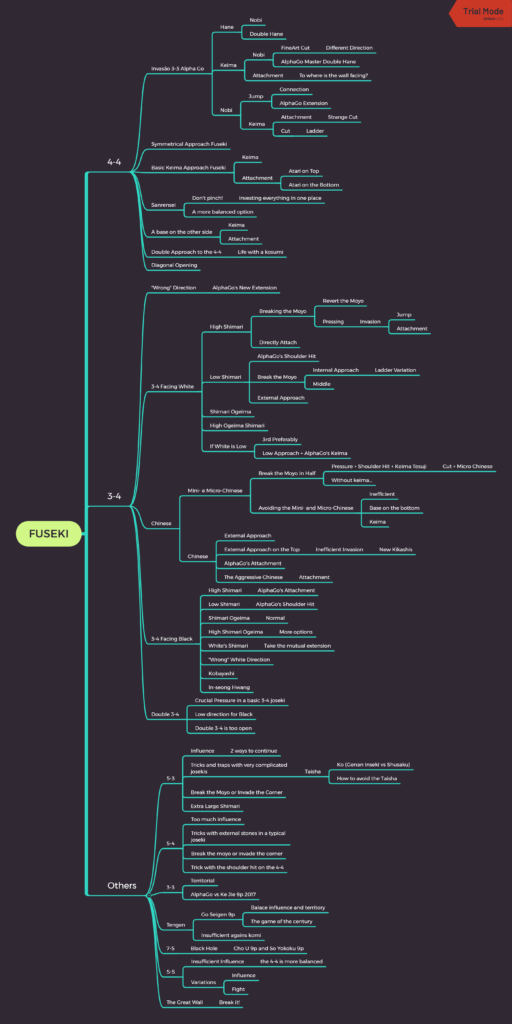
The Pocket Fuseki Encyclopedia
Here are two files that basically summarize everything I know about the opening or fuseki. I’ve tried to keep it short, but, you know, it’s Go we are talking about. This is the content I wish I had access to when I was a beginner, so I hope you will like it.
I’m a 1d KGS player who has been to a lot of places and talked to a lot of people across the globe, including South Korea and China, so this is not a professional speaking, but I’m sure even some 3d KGS players don’t know some sequences I’ve cited in the files.
The first file of the pair is about the basics, it’s meant to be read by anyone ranging from 20k to 5k, but, again, most players up to 1d will get something out of it. The second one is actually the most valuable asset, it’s meant to be an extensive exploration of everything I know, ranging from the new 3-3 developments to the annals of fuseki, featuring the many Chinese opening fusekis, dual facing 3-4s, the Black Hole fuseki, and many more.
I’ve written this content with Sabaki and would advise the reader to use
it when studying the variations
To ease your way through the massive number of variations I’ve also included a mind map that summarizes all of the branches — using the free XMind software. I wish there were a direct way of linking the branches from the SGF tree to a mind map just so large SGF files were easier to read, but so far that doesn’t exist. I’ve suggested it to the creator of Sabaki on Github and he seems to have been working on a similar idea and perhaps an implementation of this — breakthrough — idea is not far off.
To make everything more digestible, I’ve broken the content into smaller
bites: 4-4, 3-4 and the rest.
You can download everything in one go by clicking
Later, if you wish to continue your studies, I would highly suggest you take a look at Waltheri’s Go Pattern Search, which will give you a database look at what professionals prefer. Other resources like the Josekipedia or Eidogo are also very useful.
